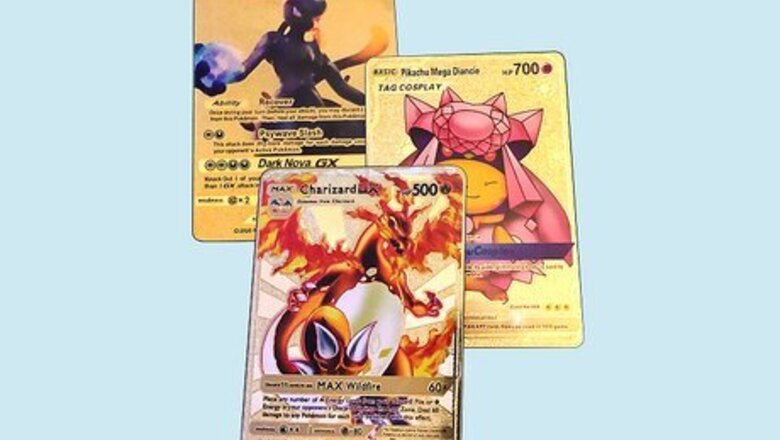
views
Are gold Pokémon cards real?
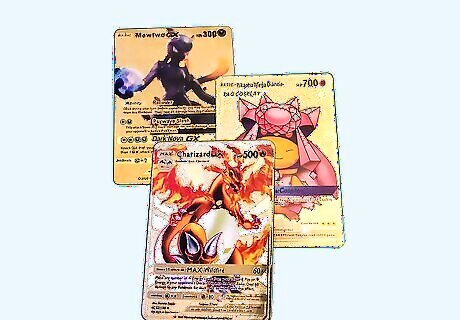
There are some officially licensed gold Pokémon cards. The Pokémon Company has released gold metal cards and gold foil holographic cards as part of the Pokémon Trading Card Game (TCG). These cards are rare and only a part of certain expansion sets, collection boxes, and promotional materials. Besides their shiny color, gold cards are considered extra rare because they often feature unique illustrations. Because gold Pokémon cards are rare and can be valuable, fakes are common. While fake cards can look like the real deal, they are not official nor playable in card tournaments.
How to Tell if Gold Pokémon Cards are Real
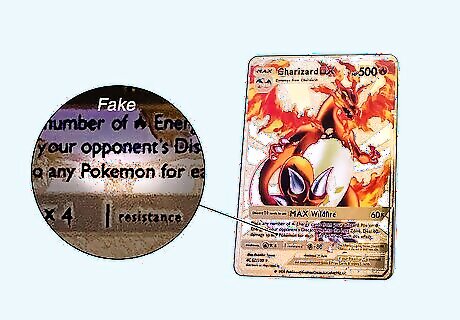
Check the card for spelling mistakes. To tell if a Pokémon card is real or not, make sure the pokémon’s name is spelled correctly. Then, look at the text on the card to ensure it’s free from errors. Fake cards often forget to put the accent on the “e” in Pokémon or write “Nintedon” instead of “Nintendo.” Ensure the text matches the card, too. For instance, if you’re looking at a Pikachu card but the text is about Mewtwo, the card is probably a fake.
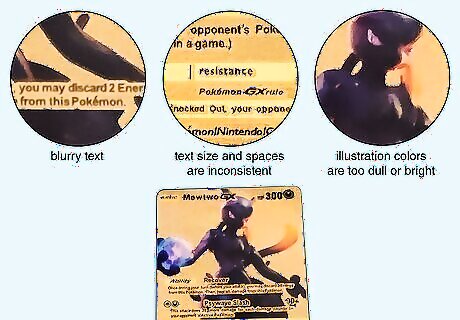
Examine the font, color, and illustration quality. Real Pokémon cards are printed well and use a clear, uniform font that’s spaced evenly and easy to read. The image on the card is crisp and the gold sheen and other colors are vibrant. Fake cards are often hard to read because the text is blurry or the font is poorly spaced. The font might be too small or large compared to real cards, too. The illustration is typically not as well done on fake cards. The colors on the card might be too dull or bright compared to the real card.
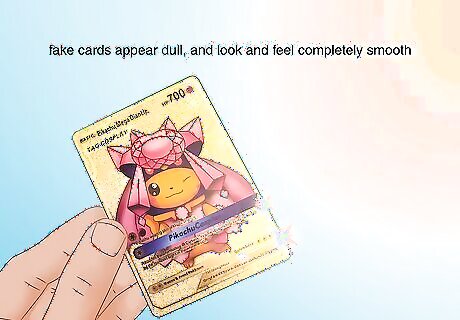
Inspect the card’s holographic shine and texture. The foiled accents on gold cards have a visible, geometric pattern that gives the card a slightly raised texture. The holographic design also shimmers and shines when you move the card around in the light. If the card appears dull and looks and feels completely smooth, it’s likely a fake.
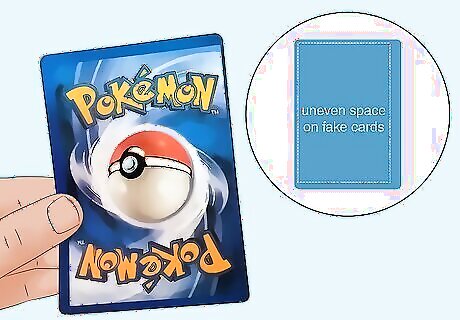
See if the back of the card is centered and the right shade of blue. Real gold cards have “Pokémon” written on the top and bottom of the card with a pokéball in the center. The background is dark blue with a dark blue, evenly spaced border. Fake cards might not center the text on the back of the card or cut off the border. The blue might be too dark, dull, or purple compared to the real card.
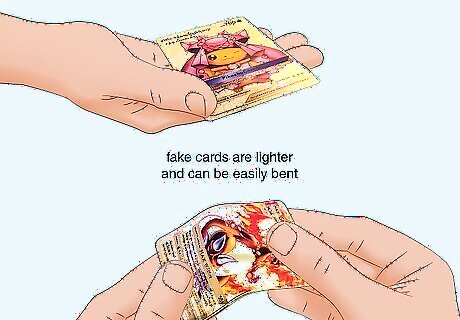
Check the card’s weight and bendability. Real Pokémon cards are printed on thick cardstock that has a substantial weight to it. The cards are stiff and do not bend or rip easily. If the card feels flimsy or very light, it’s probably a fake. If you’re looking at the card in person, bring a real card with you to compare its weight and feel.

Read the product description and check reviews if buying online. Some people make their own gold Pokémon cards and sell them as unofficial cards, so check the description to ensure you’re not looking at a custom card. Always read the seller’s reviews to see if customers are happy with their purchase or mention receiving fake cards, too. Many Pokémon card players and collectors purchase custom cards because they look cool. Just know that custom cards are not official and might not have value if you ever want to sell them.
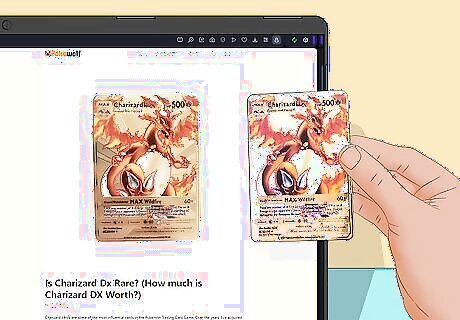
Compare the card to an image of the real card. Pull up a picture of the real, official card online and check for differences between it and the card you want to buy. Look at the illustration, font, border, symbols, and text to ensure the cards look the same. Look up the card using the official Pokémon card database or Serebii.net’s card database.
How rare are gold Pokémon cards?
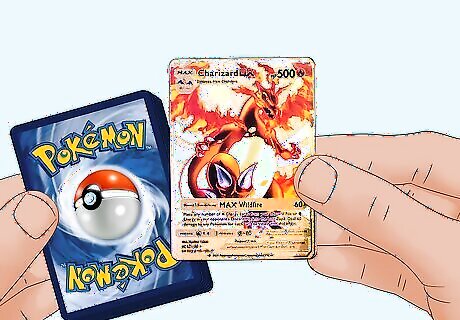
Gold cards are rare, though some cards are more rare than others. Compared to regular Pokémon cards, gold holographic cards are very rare. The odds of getting a gold card in an expansion pack is about 1 in 100. Every Pokémon card has a symbol on the bottom that indicates its rarity, so some gold cars are more rare than others. Prior to the release of Scarlet & Violet: A black star means the card is Regular Rare. 2 black stars mean the card is Double Rare. A black diamond means the card is Uncommon. A black circle means the card is Common. After the release of Scarlet & Violet: A gold star means the card is Illustration Rare. 2 gold stars mean the card is Special Illustration Rare. 3 gold stars mean the card is Hyper Rare. Booster card packs usually include 1 Rare card and 3 Uncommon cards. The rest of the cards are Common.
What are gold Pokémon cards worth?
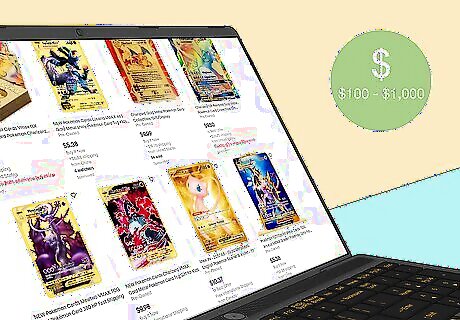
Gold cards can sell for a few bucks to hundreds of dollars. A gold Pokémon card’s value depends on its rarity, popularity, and condition. For example, a limited-release card that features a legendary pokémon like Mew or a popular pokémon like Charizard might be worth $100 to $1,000. A more wide-spread card that features an item or less popular pokémon might go for $1 to $10. Just because a card is rare doesn’t mean it’s very valuable. Pokémon cards are constantly changing in value depending on their demand and popularity. For example, the gold Ultra Ball from the Plasma Freeze Expansion usually sells for $200. The gold Inteleon from Evolving Skies sells for around $20.
Where to Find Gold Pokémon Cards
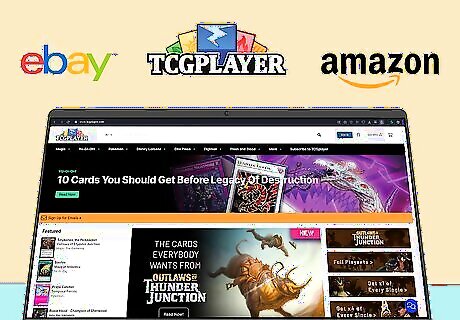
Look for gold Pokémon cards online or at game stores. If you’re searching for a specific gold Pokémon card, look for it on websites like eBay, TCGPlayer.com, or Amazon. Many game stores and comic stores sell used Pokémon cards and they might have gold cards available. Check out Pokémon conventions and card tournaments for gold cards, too. Many players set up booths to sell or trade their cards. Read the seller’s reviews before buying a card online. Compare the seller’s card to a picture of the official card to make sure it’s real, too. Search for your card online before you buy it to see what its current value is so you don’t end up paying more than it’s actually worth. Alternatively, buy Pokémon expansion packs that can contain gold cards on the official Pokémon website or at stores like Target and Walmart.
Official Gold Pokémon Cards
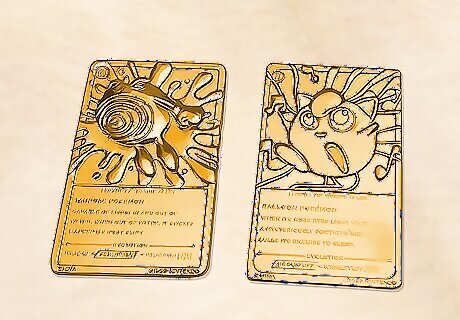
Burger King promotional cards The first gold metal Pokémon cards were released in 1999 at Burger King as promotional materials for Pokémon: The First Movie. The cards were plated in 23-carat gold and featured 1 of 6 pokémon: Charizard, Jigglypuff, Mewtwo, Pikachu, Poliwhirl, or Togepi. The cards came in plastic pokéballs and came with a certificate of authenticity.
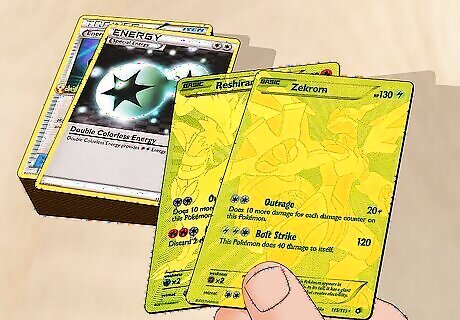
Black & White Card Sets Several holographic and gold foiled cards were released in expansion sets for Pokémon Black & White. For instance: The Legendary Treasures Expansion features a golden Zekrom and Reshiram. The Plasma Freeze Expansion has a gold Garchomp and Ultra Ball.
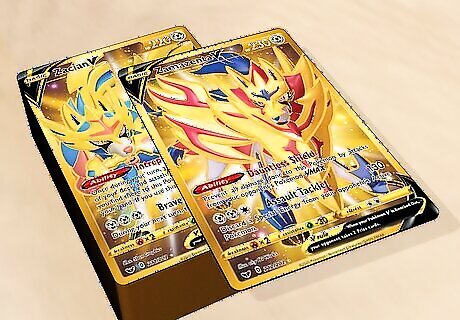
Sword & Shield Card Sets Gold foiled cards were a part of several expansion sets for Pokémon Sword & Shield. For example: The Sword & Shield Expansion included a golden Zacian V and Zamazenta V. The Evolving Skies Expansion features a gold Inteleon and Cresselia.
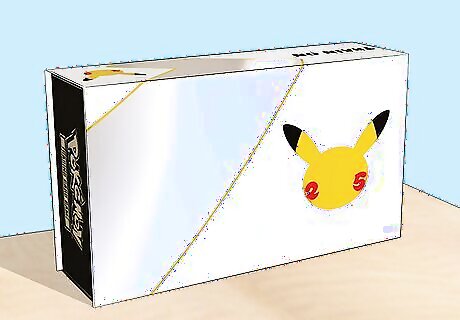
Celebrations Ultra Premium Collection In 2021, The Pokémon Company released the Celebrations Ultra Premium Collection which included solid gold metal Pikachu and Charizard cards.
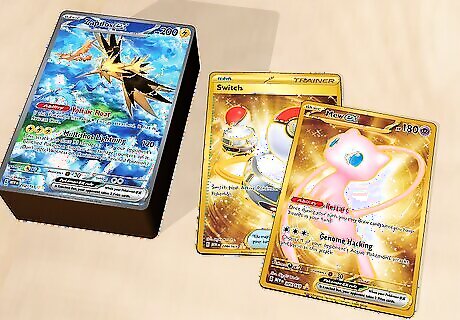
Scarlet & Violet Card Sets Several holographic, gold-foiled cards are in expansion sets for Pokémon Scarlet & Violet. For instance: The 151 Expansion includes a gold Mew ex. The Obsidian Flames Expansion includes a gold Charizard ex.



















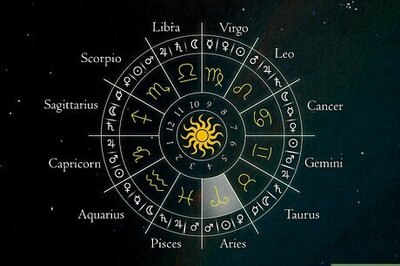
Comments
0 comment